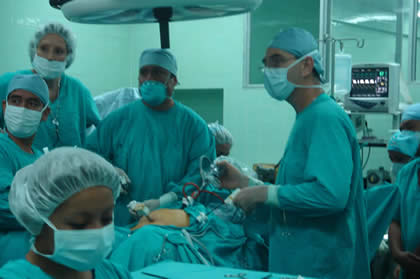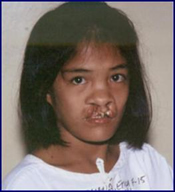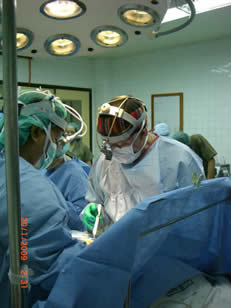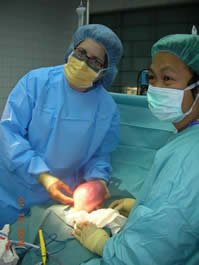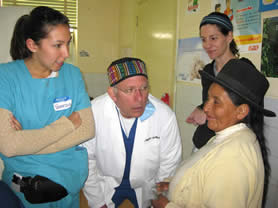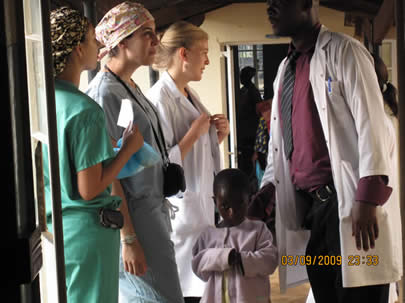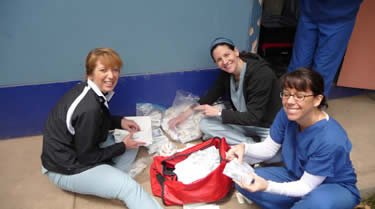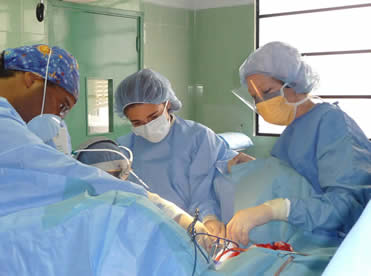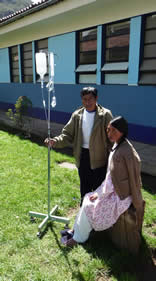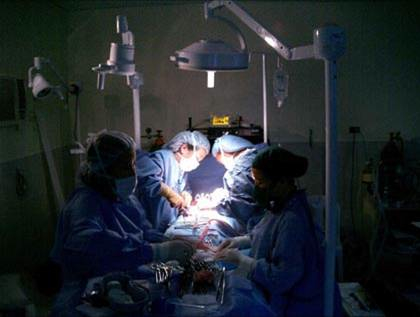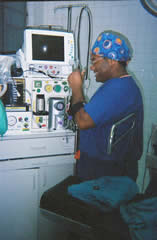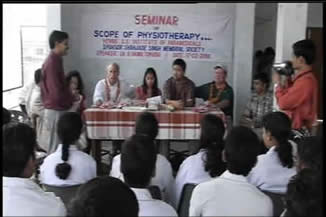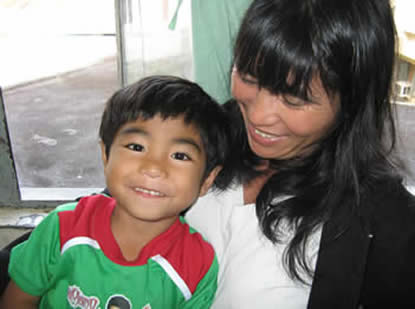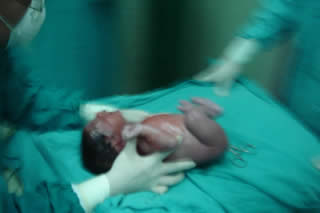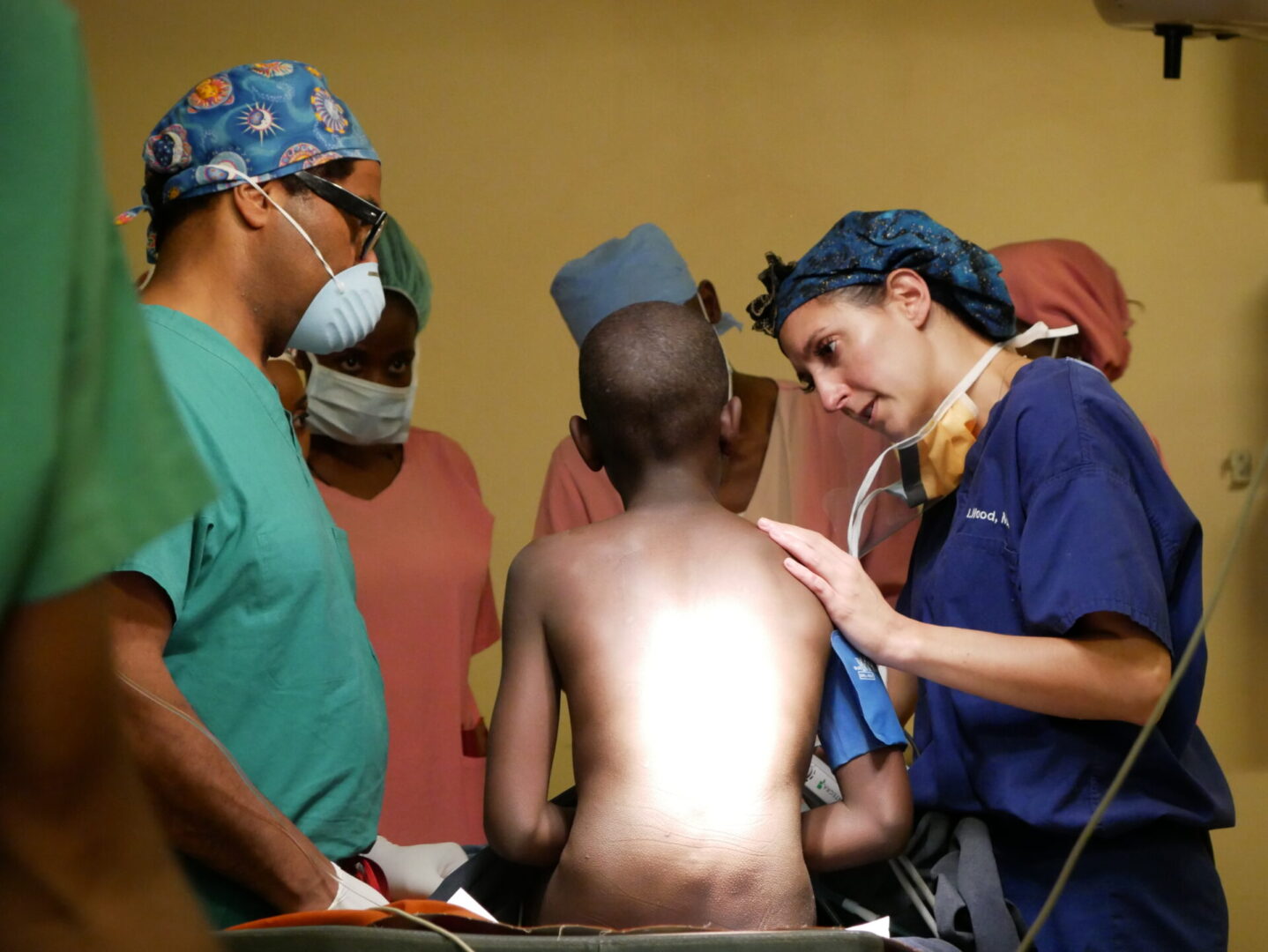
Currently, we produce one to two short-term medical missions to developing nations per year.
Each mission lasts five to ten days. Within that timeframe, at least 180 patients will receive clinical care. Additionally, 60 to 120 patients can receive surgical care, depending on the size of the mission.
MedLend prefers to bring small groups of 6 to 26 volunteers to stay streamlined and efficient. After all, each destination we serve faces unique challenges. While the lives of each patient are as varied as their cultures, countries, and regions, our organization tends to focus on surgeries for women and children.
On Expanding
Our team would love to assist even more people by offering different services. We also aim to have at least six medical missions each year, instead of three to four. However, to achieve these goals, we must procure different types of equipment. Through your generous donations and public support, our organization will be able to give quality medical care to those who need it most.
Places We Have Helped
To date, MedLend has had successful medical missions in the following countries:
Additionally, the equipment and supplies we have procured have been used to aid patients in Brazil, El Salvador, and Venezuela. Our volunteers have served thousands of people in different cities and towns. These successes would not be possible without your support.
Apply to Serve as a Traveling MedLend Volunteer
Interested medical professionals can fill out an application once a year. Ensure that your application is submitted at least two months prior to the medical mission you wish to join.
Media
There are two short films which follow MedLend on medical missions. One shows a medical mission to the Philippines. Another shows a mission to India and limited DVD copies of each film are available.
Important note: the content featured may depict graphic images of surgical procedures in progress and may not be suitable for all viewers. If you are interested in acquiring one, contact us for a copy.
We have also been interviewed by ABC 7 News and Comcast News Makers. Additionally, MedLend volunteers have been highlighted in the San Mateo County Medical Association Bulletin.
Countries We Have Visited
Uganda
Our Uganda team is led by Dr. Tom Margolis, and have been organizing annual fistula camps. Our organization also served more underprivileged women with free surgery and taught the country’s medical students to repair fistulas. This health issue afflicted mostly the underserved and treatment was not explored as deeply in the local medical school system. After our visit, more Ugandan doctors were able to help their neighbors with this problem.

Our organization would like to thank everyone who donated. You played an integral part to improve the quality of international health care and positively affected an untold number of lives. Thank you. However, we feel like we could do more, and may organize another medical mission in the future.
MedLend is honored that Dr. Henry Hamilton and Medical Director Dr. Tom Margolis were invited to participate in a special project by the University of California, Los Angeles (UCLA). The institution has built a permanent clinic in partnership with the Mbarara University of Science and Technology (MUST) to serve the needs of impoverished patients there.
According to Wikipedia, Uganda’s infant mortality rate in 2018 was about 33.8 deaths per 1,000 live births. Adults are also affected by a high mortality rate, usually only living up to 49 to 50 years, depending if they were male or female.
In Ugandan culture, it is important to produce many babies as early as possible to increase the chances of their population’s survival. However, one of the biggest problems’ families are facing in this country is vesicovaginal fistulas.
Many Americans have never heard of a fistula—they are extremely rare in American culture. However, in Uganda, tradition dictates that females marry and produce offspring by age 13 or 14. This practice is often the cause of vesicovaginal fistulas.
We have paraphrased the descriptions given by Dr. Hamilton and Dr. Marglolis on the matter.
“When girls begin having babies at this early age, the pelvis can often be too small to support the life they carry. This leads to obstructed labor and can produce a devastating phenomenon of delivering a still-born child. Also, it tends to tear a hole between the bladder and the vagina, leading to urine leakage that produces a putrid scent. Because of the smell, husbands often divorce the young wives, who are then cast out of their homes and aside by their families.
Luckily, MedLend was there, surgically repairing nearly 30 fistulas alongside medical students and representatives from UCLA and MUST. We feel fortunate to be a part of their success.”
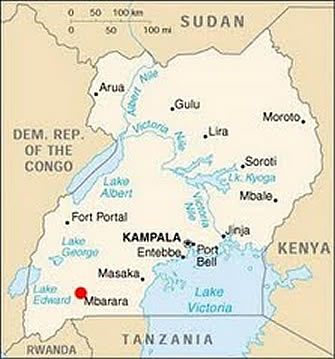
Philippines
Our Philippines team is led by MedLend founder, Dr. Henry Hamilton. He looks forward to returning to the Philippines soon!
We plan to organize more medical missions in the future. Please support our cause by donating today.
It is made of 7,107 islands that form an archipelago in Southeast Asia. This country is located between the South China Sea and the Philippine Sea, east of Vietnam. The geography and climate include dangers like active volcanoes, typhoons, landslides, earthquakes, and tsunamis. However, the islands are also extremely beautiful and attract many visitors. It is no wonder tourism is one of their fastest-growing industries.
According to the Central Intelligence Agency’s World Factbook, there are 109,180,815 people living in the Philippines. The unemployment rate is 6.7% and at least 30% of people live below the poverty line, meaning they cannot provide basic food, water, and/or shelter for their families.
Dr. Henry Hamilton, our founder, has been participating in medical missions to the Philippines for more than two decades with the Philippine Medical Society of Northern California.
In fact, that organization was the inspiration for MedLend. Initially, we helped collect medical equipment and supplies for those missions. In partnership, we have served the cities of Iloilo, Davao, Bayombong, and many others. Currently, we are working on organizing more independent missions to the Philippines.
Children suffer from cleft palates there more than any other country that we have visited. The most prominent problem women have there are cysts and fibroids. This may be due to the difference in iodine content in the local water supplies.
Peru
Surgical missions to Peru are extra-special to us. The very first independent MedLend medical mission we organized took place at Lima in 2006. Since then, we have returned to Peru three times and performed surgical missions in Ica and Huancavelica (which is in the Andean mountains, between Huanuco and Huancayo). Also, two medical student volunteers from Peru helped create our student exchange program. It is a tradition we hope to carry on for generations.
This country needs our services. According to a 2009 report by the Pan American Health Organization (PAHO), the “mortality from malignant neoplasms [tumors] did not change significantly between 1987 and 1997, but the proportion of deaths from cancer increased from 9.0% to 14.2%, and the potential years of life lost from tumors increased 33.4%, indicating more premature death. In the mortality profile for women the leading sites of malignant tumors are the uterus, stomach, and other digestive organs.”
Our goal is to decrease the tumor-related mortality rate of females in Peru. Between 2006 and 2009, MedLend has had four medical missions to the different regions and helped remove an estimated 240 tumors from female reproductive systems in that country alone. By sharing our success, we hope you will be inspired to contribute to it. Thank you.
India
When most people envision India, they may think of Bollywood movies or lavish postcard images of the Taj Mahal. The country has a lot to be proud of besides those accomplishments. The recent growth of industries such as telecommunications, pharmaceuticals, information technology, and business process outsourcing has made India an emerging economic powerhouse. However, the country still faces intimidating health challenges, such as maternal and child malnutrition.
These health problems still exist largely due to the scarcity of medical resources outside of major cities. Some of the more industrialized regions have access to government health care programs, but many do not, especially in rural areas. India is one of the countries your support has reached, thanks to generous donations.
In 2006, MedLend visited India for a medical mission. After receiving surgery, one patient sat with her daughter and remarked, “Of course I am happy now. I am well.” Her daughter added, “All of our worries are gone, thanks to your blessings.”
Our most recent medical mission to India—sponsored by the local Red Cross—took place in the Provincial Hospital of Hardoi. The hospital is located in the Province of Uttar Pradesh, 3 hours by dirt road northwest from Lucknow. Uttar Pradesh has the highest rate of poverty of all the states in India.
All in all, we sent three ob-gyns, one plastic surgeon, and one gynecologist. There were 50 surgeries for women, including myomectomies, hysterectomies, and removals of ovarian cysts. We managed to perform 75 surgeries for children. There were an additional 200 patients served with a screening. For some, our visit was their only hope of seeing a medical professional.
You can experience highlights from this medical mission by purchasing a copy of “Making A Difference,” an 8-minute film. We have a limited supply and it is intended for mature audiences only. Order one by contacting us today.
Guatemala
We are grateful to Hospital De La Familia in Nuevo Progreso, San Marcos, Guatemala. They generously hosted multiple missions over the years.
Our MedLend volunteers had a great time and learned some valuable lessons from your hospital. Thank you!
This country is located below Mexico and Belize. It lies above El Salvador and Honduras. The Pacific Ocean waves onto its western coast, and the Caribbean Sea sneaks onto the eastern seaboard. This location places Guatemala directly in the path of hurricanes, such as Mitch in 1998 and Stan in 2005. Also, the Motagua Fault cracks beneath the surface of the mountains. Because of these natural disasters, flooding and mudslides also pose a significant danger.
We have been to this country thrice. These missions were sponsored by an organization called La Familia, which is based in Palo Alto, CA. The missions to this country are all in Nuevo Progreso Province – at about 2,000 feet altitude in the coffee-growing region of the Chiapas Mountains near the border of Mexico.
According to our founder, “70% of our patients walked from Mexico across the border into Guatemala and up to the mountains where we were located because they cannot get help in their local villages. They also cannot get help in Guatemala [from hospitals] since they are not Guatemalan citizens.”
Governments in this area recognize an official border between Guatemala & Mexico, but most MedLend patients here are from the native (Amerindian) population, which does not honor that border. “They do not see themselves as Guatemalans or Mexicans. On the social ladder, they are the poorest of the poor.”
For MedLend volunteers, the country has given them some memorable experiences. For example, Dr. Hamilton remembered a story about a “patient who came in, and the previous year there was a rainstorm and her house was washed away. Her husband and her four children all drowned, and she was 33 years old. She was trying to rebuild her life. She’d found a new partner and wanted to make sure that she would be able to have children again. Her attitude is what really stood out. ‘Hey, I got a life to live.’ It was amazing that so many seemingly terrible things were happening but these patients were able to live in the present and deal with what was in front of them. It was quite refreshing. I learned a lot.”
Be Part Of the Solution
You can help women repair their bodies and restore their family lives by donating today. If you would like your contribution to go towards a specific medical mission or program, indicate it on the memo line of your check. You may also use our online donation program with Network for Good and click the Donate Now button. On behalf of these patients, we extend our warmest thanks.


